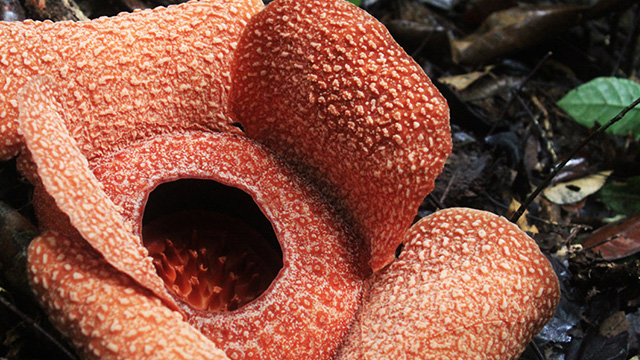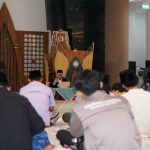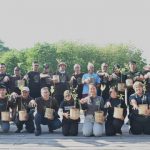Jakarta (Greeners) – Following its two centennials celebration, Bogor Botanical Garden will showcase its flagship collections, including the endangered Rafflesia patma and other new species, such as Begonia and Aeschynantus, in May, said Didik Widyatmoko, head of botanical gardens, Indonesian Institute for Sciences (LIPI), in Jakarta, on Saturday (29/4).
“Those varieties are the prima donna of Bogor Botanical Garden,” said Widyatmoko.
Sri Rahayu, researcher of Plant Conservation Center, Bogor Botanical Garden – LIPI, said that Rafflesia patma has been the flagship species for its rareness and parasitic nature.
Bogor Botanical Garden is the first institution in the world to have managed to remove the flower from its natural habitat through grafting technique.
READ ALSO: Bogor Botanical Garden Highlights Waste Management for Its 200 Years Celebration
Grafting is a technique to join host root of Rafflesia, which is Tetrastigma sp. of Vitaceae family. Tetrastigma is a vine that grow in tropical forest. Tetrastigma serving as host root of Rafflesia patma in Bogor Botanical Garden is collected from its natural habitat in Pangandaran Nature Reserve located in Ciamis of West Java. This tetrastigma was joint with the one grows in Bogor Botanical Garden.
“Because of its limited habitat, rafflesia is an endangered plant species facing extinction. The ecological change of tropical forest to other uses contribute to the preservation of the plant. Why it has become the flagship, because it’s a parasitic plant so it was a spectacular to have grew it outside its natural habitat,” said Rahayu.
Rafflesia is an endemic plant of Southeast Asia of which the habitat is locality. There are 17 species of rafflesia, starting from the biggest and famous Rafflesia arnoldii in Bengkulu to the small Rafflesia rochusenii which could only be found in Salak Mountain and Gede Mountain located in Bogor and Sukabumi.
During flowering, rafflesia gives out corpse-like stinky odor as part of its way to attract flies for pollination.
READ ALSO: Botanical Gardens Not Only Aim for Research
Meanwhile, Begonia and Aeschynantus (lipstick plant), she said, was a new variety discovered by researchers in Bogor Botanical Garden through hybrid process.
“The new variety eventually becoming special and not just Begonia and lipstick plant but other plants such as hoya flower,” she added.
Plant Variety Protection is a patent right or exclusive right for researcher or plant breeders registered since 2000 under the law. Hence, plant breeders can protect their new discoveries exclusively.
Eight varieties newly registered by PVP is lipstick plant (Aeschynanthus Soedjana Kassan), hoya flower (Hoya Kusnoto), lipstick plant (Aeschynanthus Mahligai), begonia (Begonia Tuti Siregar), and Begonia Lovely Jo.
Sri Rahayu is registered as hoya and lipstick plants discoveries. Meanwhile, begonia is discovered by Hartutiningsih with Wisnu Handoyo Ardi and I Made Ardaka.
Reports by Danny Kosasih



















































